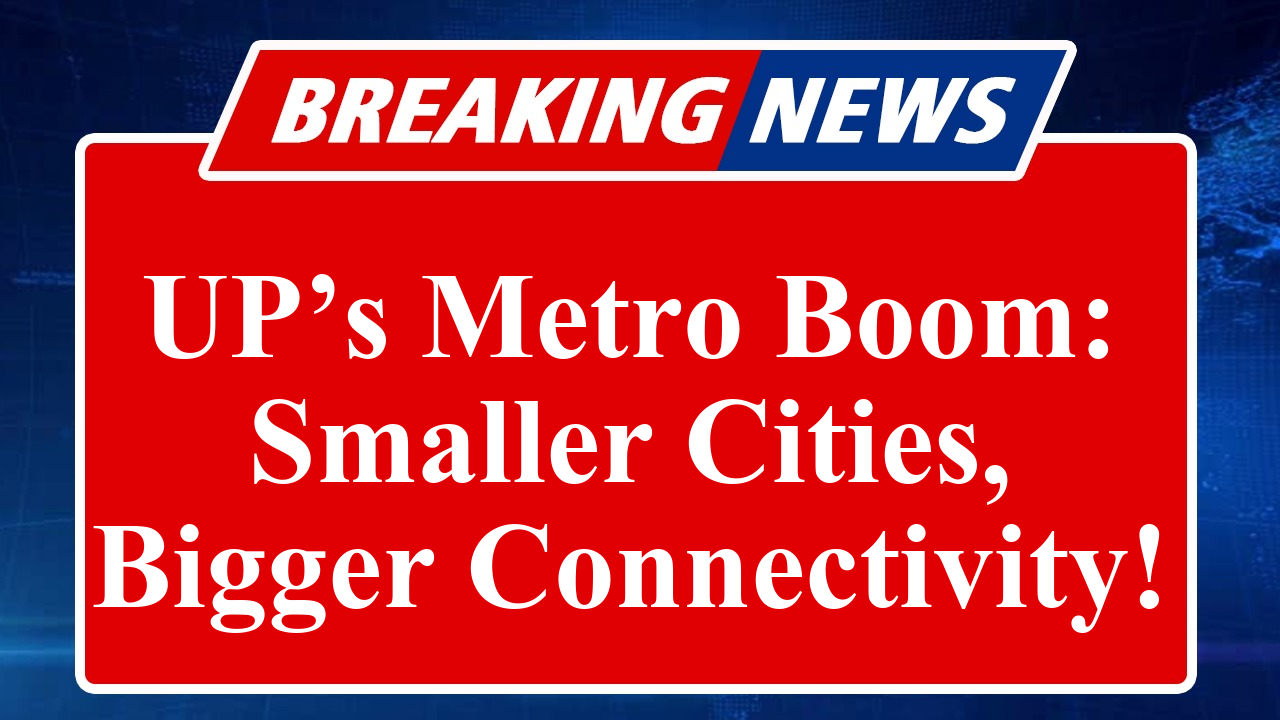“Uttar Pradesh is expanding its metro network into smaller cities, with projects like the Gorakhpur and Varanasi Metros gaining momentum. These initiatives aim to boost connectivity, reduce congestion, and drive economic growth. With modern infrastructure and government backing, UP’s urban landscape is set for a transformation, promising better mobility and real estate growth in Tier-2 cities.”
UP’s Metro Expansion: Smaller Cities Get Big Connectivity Boost
Uttar Pradesh is witnessing a metro revolution as the state government pushes to extend modern rail transit to smaller cities, aligning with India’s broader urban mobility goals. The state, already home to operational metro systems in Lucknow, Kanpur, Noida, and Ghaziabad, is now focusing on Tier-2 cities like Gorakhpur, Varanasi, and Agra to enhance connectivity and spur economic development.
The Gorakhpur Metro, a flagship project under Chief Minister Yogi Adityanath’s vision, is a significant step toward transforming the city into a modern urban hub. Approved in 2023, the project features two corridors spanning 27.4 km with 27 stations. The first corridor, running from Shyam Nagar to Suba Bazar, covers 15.1 km, while the second, from Gulriha to Gorakhpur University, extends over 12.3 km. The Detailed Project Report (DPR) has been finalized, and construction is expected to commence by mid-2026, with an estimated completion timeline of 2029. The project, costing approximately ₹4,672 crore, aims to ease traffic congestion and provide seamless connectivity to key areas, including educational institutions and commercial hubs.
Varanasi, a spiritual and cultural epicenter, is also on the metro map. The Varanasi Metro, with a proposed 29.2 km network across two corridors, is designed to cater to the city’s growing population and tourist influx. The first corridor, from Bhelupur to Benia Bagh, will connect key pilgrimage sites, while the second will link major residential and commercial zones. The project’s DPR is under review, with construction likely to begin in 2026. This initiative is expected to reduce travel time, alleviate pressure on roads, and boost local businesses, particularly in tourism-driven areas.
Agra, home to the Taj Mahal, is another city set to benefit from metro expansion. The Agra Metro’s first phase, covering 15.4 km with 14 stations, is already operational, having commenced services in March 2024. The second phase, which extends the network by 14.8 km, is under construction and slated for completion by 2027. With a total investment of ₹8,379 crore, the Agra Metro aims to improve access to tourist attractions and reduce vehicular pollution, enhancing the city’s appeal as a global destination.
These projects reflect Uttar Pradesh’s alignment with the Union Government’s 2017 Metro Rail Policy, which encourages metro systems in cities with populations exceeding one million. The policy emphasizes Comprehensive Mobility Plans (CMPs) to ensure sustainable urban transit. Smaller cities like Gorakhpur (population: 1.1 million) and Varanasi (population: 1.2 million) fit this criterion, justifying the investment in metro infrastructure. The state government is also exploring Metro Lite systems—lower-cost, medium-capacity rail networks—for cities like Meerut and Jhansi, where demand may not yet warrant full-scale metro systems. Metro Lite, costing about 40% of conventional metro systems, offers a viable solution for Tier-2 and Tier-3 cities, with projects in Meerut already underway as part of the Delhi-Meerut Regional Rapid Transit System (RRTS).
The economic impact of these metro projects is significant. Research indicates that property prices within a kilometer of metro stations can rise by 20-50%, as seen in cities like Bengaluru and Delhi-NCR. In UP, real estate markets in Gorakhpur and Varanasi are already witnessing increased demand, with developers eyeing transit-oriented development (TOD) projects near proposed stations. These metros are also expected to create jobs, both during construction and in operational phases, while fostering local commerce.
However, challenges remain. Posts on X highlight concerns about metro alignment in some cities, with users questioning whether lines like the Lucknow Airport Metro miss key residential areas, potentially limiting ridership. Others argue that metro projects in suburbs, rather than congested city centers, may prioritize land value inflation over optimal utilization. Despite these critiques, the state government’s commitment to expanding metro networks is unwavering, with funding from both state and Union budgets. For instance, the Varanasi Metro has secured partial funding from the Uttar Pradesh government, while Agra’s project benefits from central assistance under the Metro Rail Policy.
The Uttar Pradesh Metro Rail Corporation (UPMRC) is spearheading these initiatives, leveraging its experience from the successful Lucknow and Kanpur Metros. The UPMRC is also incorporating advanced technologies, such as driverless trains and energy-efficient systems, to ensure sustainability. For example, the Agra Metro uses regenerative braking to reduce energy consumption, aligning with India’s environmental goals.
As of August 2025, India’s metro network spans 1,000 km across 17 cities, with UP contributing significantly to this growth. The state’s focus on smaller cities reflects a broader trend of metro expansion into Tier-2 and Tier-3 cities, as noted by Union Minister Manohar Lal Khattar, who reported a tenfold increase in monthly metro line construction since 2014. With 980 km of metro lines under construction nationwide, UP’s projects are part of a transformative phase in India’s urban mobility landscape.
Disclaimer: This article is based on recent news, reports, and government announcements regarding metro projects in Uttar Pradesh. Information on project timelines, costs, and alignments is sourced from publicly available data, including the Uttar Pradesh Metro Rail Corporation and Union Ministry of Housing and Urban Affairs. Public sentiment from X posts is included for context but is not conclusive evidence. Readers are advised to verify details with official sources for the latest updates.

